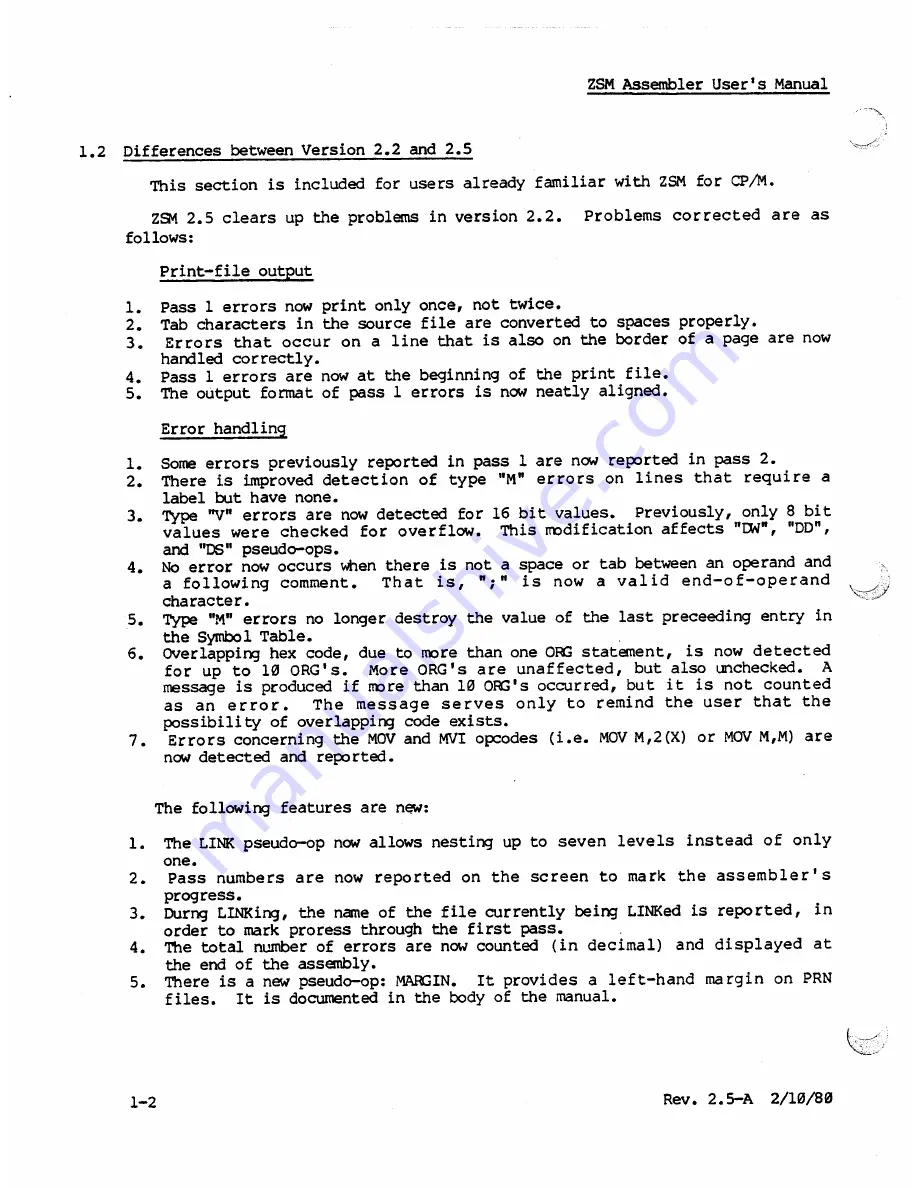
This section
is included
for users
already
familiar
with Z8Mfor CP/M.
ZSM2.5 clears
up the problems in version
2.2.
Problems
corrected
are
as
follows:
Print-file
output
1.
Pass 1 errors
now print
only once, not twice.
2.
Tab characters
in the source file
are converted
to spaces properly.
3.
Errors
that
occur
on a line
that
is also on the border of a page are now
handled correctly.
4.
Pass 1 errors
are now at the beginning of the print
file.
5.
The output
format of pass 1 errors
is now neatly
aligned.
Error handling
1.
Someerrors
previously
reported
in pass 1 are now reported
in pass 2.
2.
There is improved detection
of type
"M" errors
on lines
that
require
a
label
but have none.
3.
TyPe~"
errors
are now detected
for 16 bit
values.
Previously,
only 8 bit
values
were checked
for
overflow.
This roodification
affects
"001",
"DO",
and "DS
11
pseudo-ops.
4.
No error
now occurs when there
is not a space or tab between an operand and
a following
comment.
That
is,
";"
is
now a valid
end-of-operand
character.
5.
Type "M" errors
no longer destroy
the value of the last
preceeding
entry
in
the Symbo
1 Table.
.
6.
Overlappin;
hex code, due to roore than one oro statement,
is
now detected
for
up to
10 ORG's.
More ORG's are
unaffected,
but also
unchecked.
A
message is produced if roore than leI oro's
occurred,
but
it
is
not
counted
as
an error.
The message
serves
only
to
remind
the
user
that
the
possibility
of overlappin;
code exists.
7.
Errors
concerning
the MOV
and MYIopcodes (Le.
MOV
M,2(X) or MOV
M,M) are
now detected
and reported.
1.
The LINKpseudo-op now allows nestin;
up to seven
levels
instead
of only
one.
2.
Pass
numbers are
now reported
on the
screen
to mark the
assembler's
progress.
3.
Durn; LINK
in; , the name of the file
currently
bein;
LINKedis repe rted,
in
order to mark proress
through the first
pass.
4.
The total
number of errors
are now counted
(in decimal)
and displayed
at
the end of the assembly.
5.
There is a new pseudo-op: MARGIN.It provides
a left-hand
margin
on PRN
files.
It
is documented in the body of the manual.










































